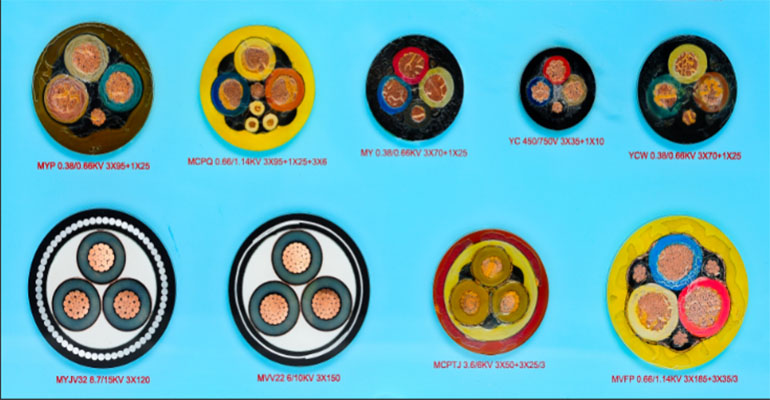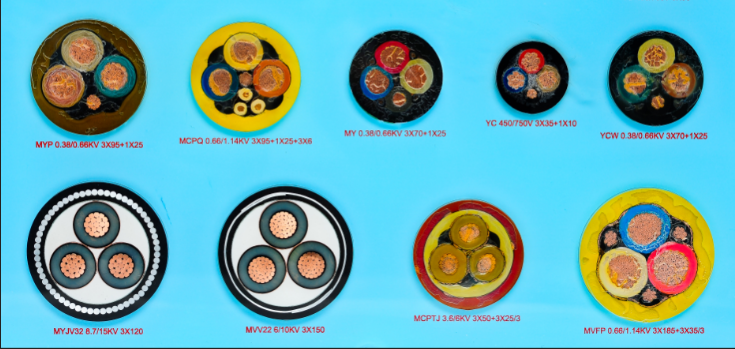- Offices Time:24 Hours Online
- Email:[email protected]
- WhatsApp:+8618339938759

Posted on September 13, 2022
Main features of power cables
The operation of power cable lines is one of the important links in power production. The safety of cable line operation is related to the safety of production of enterprises and the safety of people’s lives and property. With the increasing number of cable lines and the increase of operating years, the number of cable faults has gradually increased, and the faults of the cable body, cable accessories, and cable accessory equipment that have occurred during the operation of the cable have also increased significantly. Today, I will briefly introduce the relevant problems in the operation and maintenance of power cables.
1.Characteristics of cable lines
Cable line refers to the line that uses cables to transmit electrical energy. It is mainly composed of cable body, cable intermediate joints, electrical line ends, etc., and also includes corresponding civil construction facilities, such as cable trenches, pipes, shafts, tunnels, etc. Generally located underground, there are also overhead or underwater laying. Compared with overhead lines, cable lines have the following main advantages:
(1)Disturbed by natural meteorological conditions (such as lightning, wind and rain, smoke, pollution, etc.);
(2)Not affected by the growth of trees along the line;
(3)Conducive to the beautification of the urban environment;
(4)It does not occupy the ground corridor, and the same underground passage can accommodate multiple circuits;
(5)It is beneficial to prevent electric shock and use electricity safely;
(6)The maintenance cost is small. But there are also the following disadvantages;
(7)For the same conductor cross-sectional area, the transmission current is smaller than that of the overhead line;
(8)The investment and construction cost increases exponentially, and increases with the increase of voltage;
(9)The fault repair time is also longer.
2.Test and acceptance of power cable put into operation
In addition to the handover test and preventive test, the power cable should also be subjected to an insulation test during the construction process to identify and inspect the cable quality and process quality in all aspects of construction. Before laying, conduct a test on the cable reel to identify the good cup of the cable; after laying and before laying, conduct a test to identify whether the cable is damaged during laying; conduct a test after the construction of the cable head to identify the quality of the cable head; conduct before and after cable maintenance Test to identify maintenance quality. The main contents of the inspection are as follows:
(1)The cables should be arranged neatly, the fixing and bending radius of the cables should comply with the design drawings and relevant regulations, the electrical system should be free from mechanical damage, and the signs should be installed complete, correct and clear. The terminals and intermediate joints of oil-impregnated paper insulated cables and oil-filled cables should be free of oil leakage;
(2)There should be no sundries in the cable trench and the tunnel, the cover plate of the cable trench should be complete, and the lighting, ventilation, drainage and other facilities in the tunnel should meet the design requirements;
(3)The marking pile of the directly buried cable should be consistent with the actual path and the spacing should meet the requirements. The signs should be clear, firm and durable;
(4)The signs and night lighting devices on both sides of the underwater cable line and in the forbidden anchorage area shall meet the design requirements.

3.Cable failure
(1)Insulation failure
The insulation aging of cables mainly occurs in the later stage of operation, and generally occurs in cable lines that have been in operation for 15 years or more, resulting in a substantial increase in the cable failure rate.
Overheating will accelerate insulation aging and deterioration. The electrical ionization generated by the air gap inside the cable insulation will cause local overheating, carbonization of the insulating material, and a decrease in the dielectric strength. Cable overload is an important factor for cable overheating. Cables installed in cable-intensive areas, cable trenches and cable tunnels with poor ventilation, parallel or crossed cable paths and heat pipes without effective insulation measures, etc., will overheat the cables and accelerate the damage of the insulation layer.
Cable insulation operates under the action of electricity and heat for a long time, and its physical properties will change, which will lead to the reduction of its insulation strength or the increase of dielectric loss, which will eventually lead to insulation collapse and aging failure. The main reasons for insulation aging are:
a. Improper selection of cables, resulting in cables working under overvoltage for a long time:
b.The surrounding of the cable line is close to the heat source, so that the part of the cable or the entire cable line is heated for a long time and prematurely aged;
c.The cable is prematurely aged in an environment that has adverse chemical reactions with insulation;
d.When multiple cables are running in parallel, one or several of them are in poor contact, resulting in overloaded operation of other parallel cables;
e.When the cable accessories are made, the cable connection tube is not crimped firmly, which will increase the contact resistance and cause overheating.
(2)Attachment issues
The cable intermediate joints and terminal heads are usually completed by the installer on-site at the laying site, and it is easy to make mistakes if you are not careful. Cable accessory faults account for the main part of cable line faults, and its macroscopic manifestations are composite interface discharge and accessory material aging. The failure of cable accessories is often due to the inaccurate production process. During the production process, defects such as air bubbles, moisture and impurities appear in the accessories, resulting in partial discharge and insulation breakdown, which are mainly reflected in:
a.The quality of the intermediate joints and terminals of the cables is not high.
b.The cable expands and contracts due to changes in load and environmental factors during operation, especially the heat-shrinkable accessories cannot lose their sealing effect with elastic deformation, and form a breathing effect between the accessories and the cable insulation layer. , bringing moisture and moisture in the atmosphere into the accessories, causing internal short-circuit faults in the cable accessories. Poor quality cold shrink accessories, reduced shrink force or defective sealing where a reliable seal is required can lead to the intrusion of external moisture and ultimately lead to cable failure.
c.When the cable head is made, due to the high humidity and humidity in the environment, reliable dehumidification and moisture removal measures are not taken. The cable insulation is partially damp, and the insulation performance is reduced. It develops into a penetrating channel during operation, resulting in cable breakdown accidents.
(3)Outer sheath problem
In medium and high voltage power grids, cables are more and more widely used. The outer sheath of power cables is the first line of defense to protect cables, and its integrity is directly related to the safety of the internal structure and the service life of the cables.
Whether the cable line can operate safely is directly related to the safe operation of the entire power grid and the stability of the system. Only by strengthening quality control and acceptance checks from all aspects of cable production, transportation, laying, installation, testing, inspection, and inspection, can cable failures be minimized and long-term safe operation of cable lines be ensured.
Post categories
Most Popular Posts
-
The 136th Canton Fair welcomes you to participate!
October 12, 2024 -
High temperature cable introduction
July 26, 2024 -
Kenya Power and Energy Exhibition 2024
June 11, 2024 -
Introduction of rubber sheathed cable
June 5, 2024





